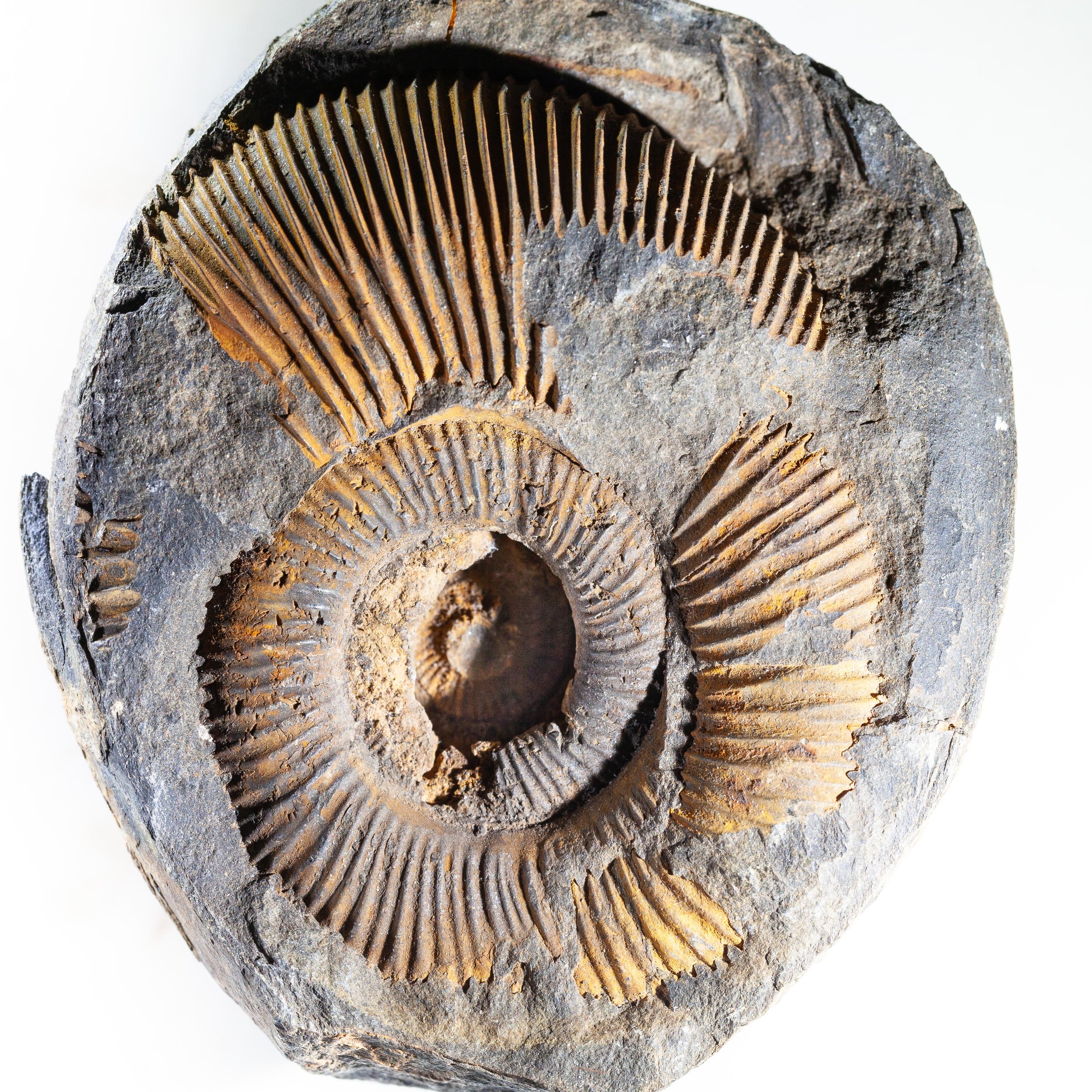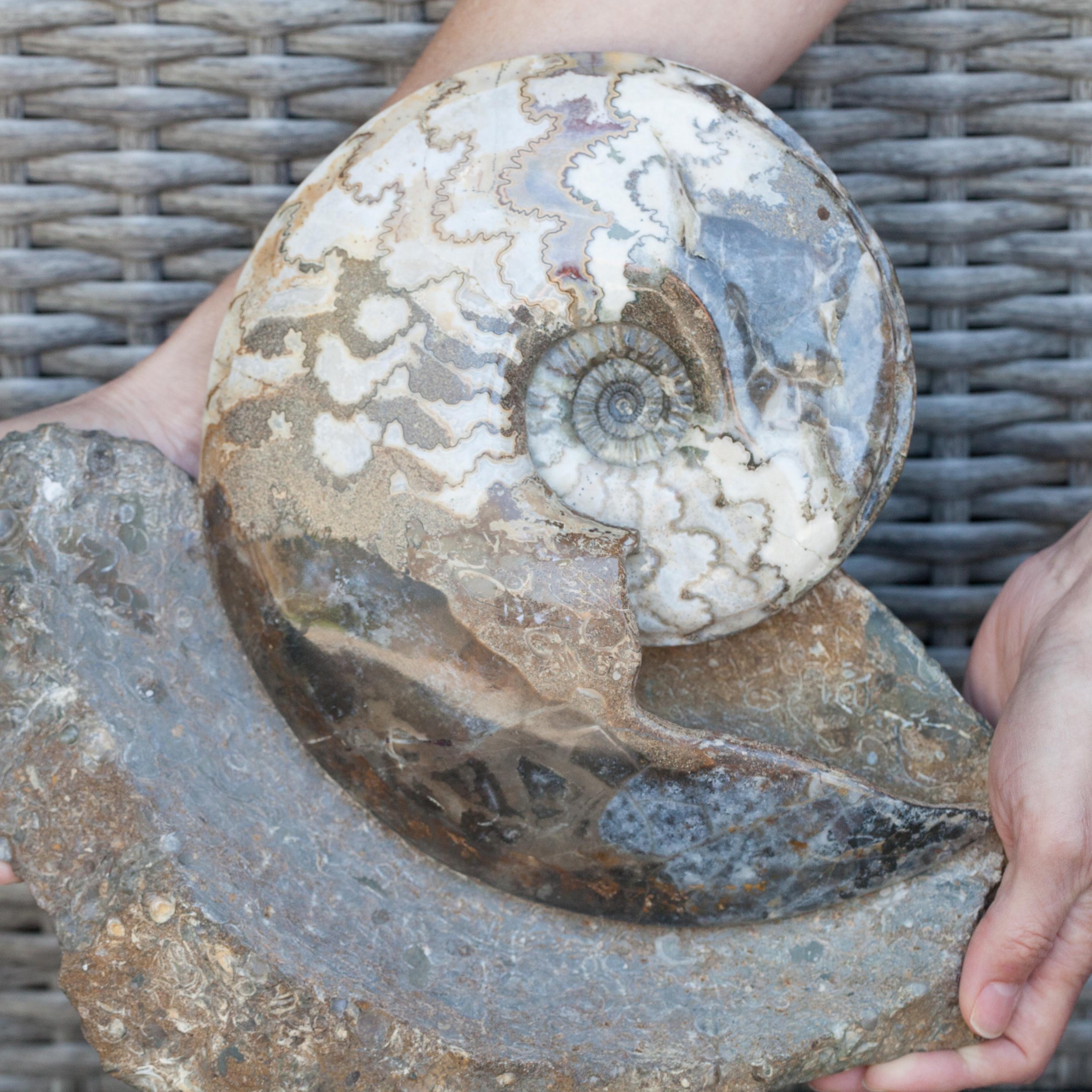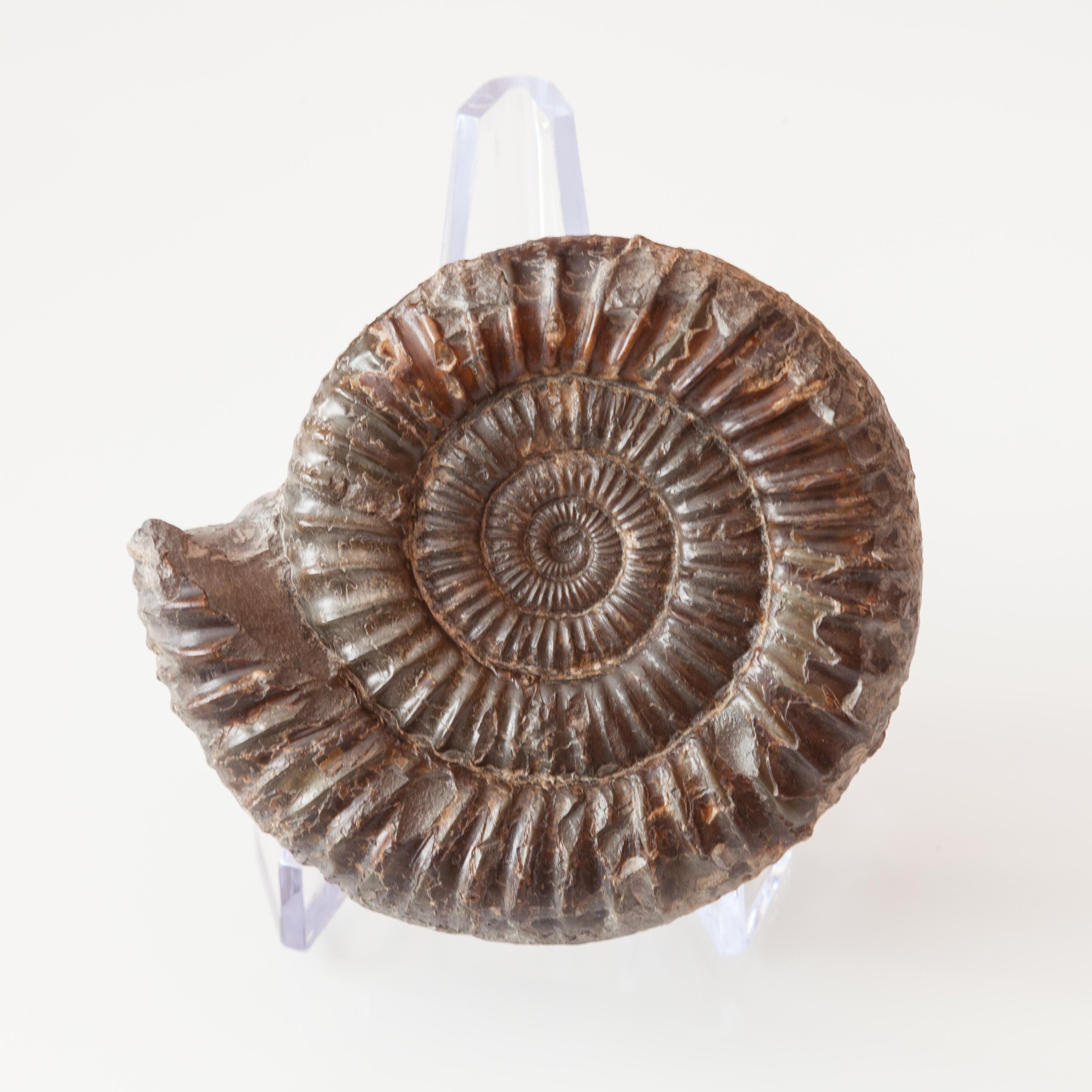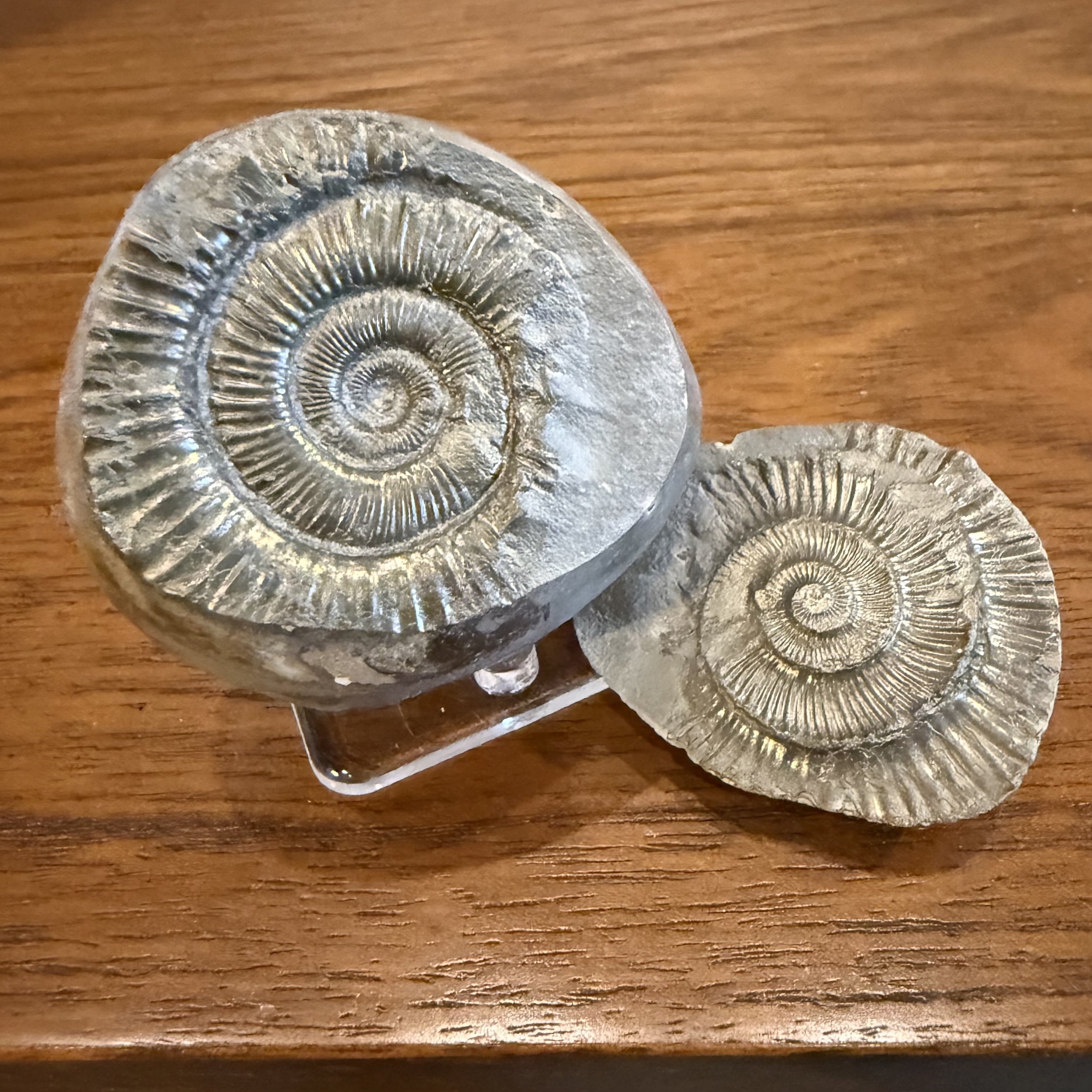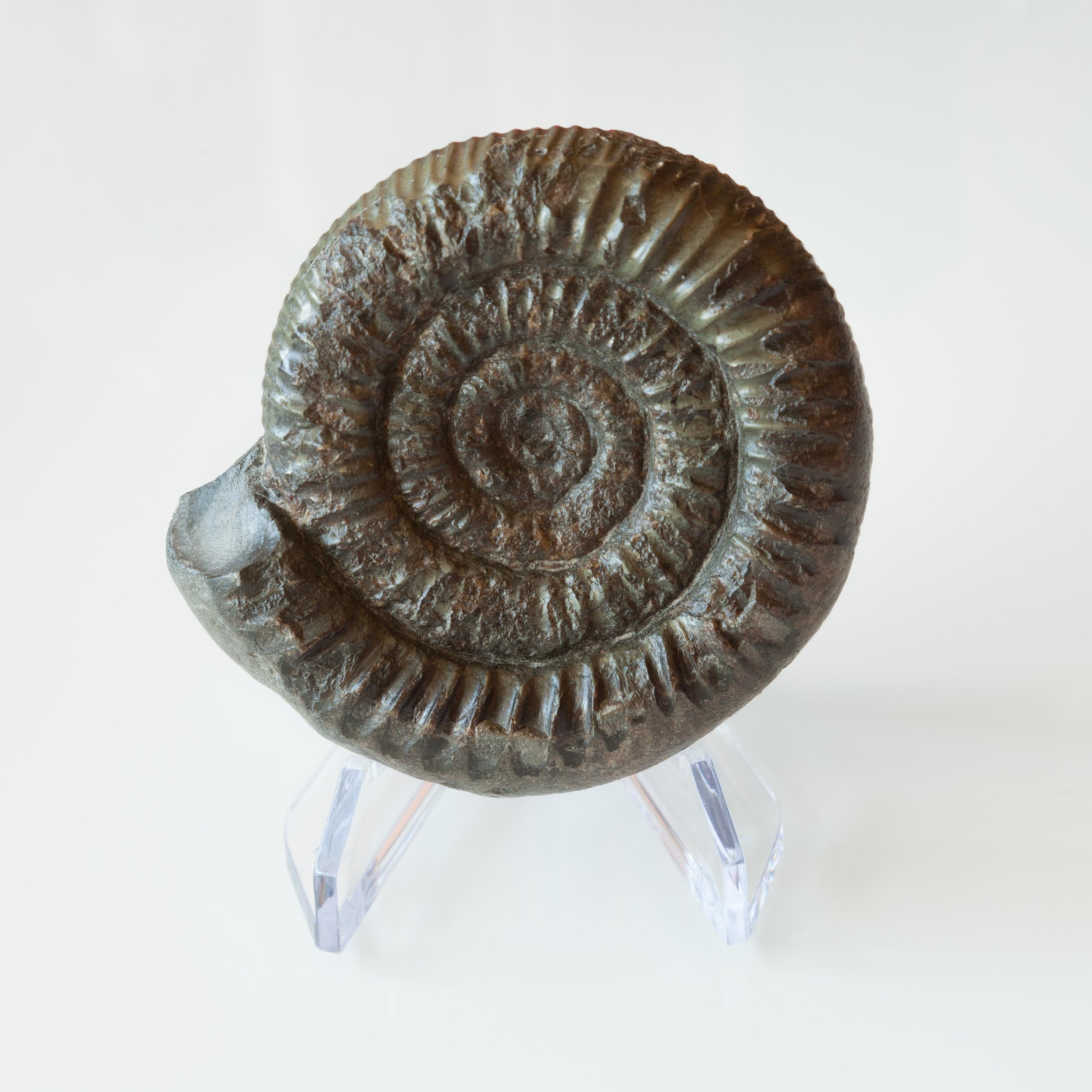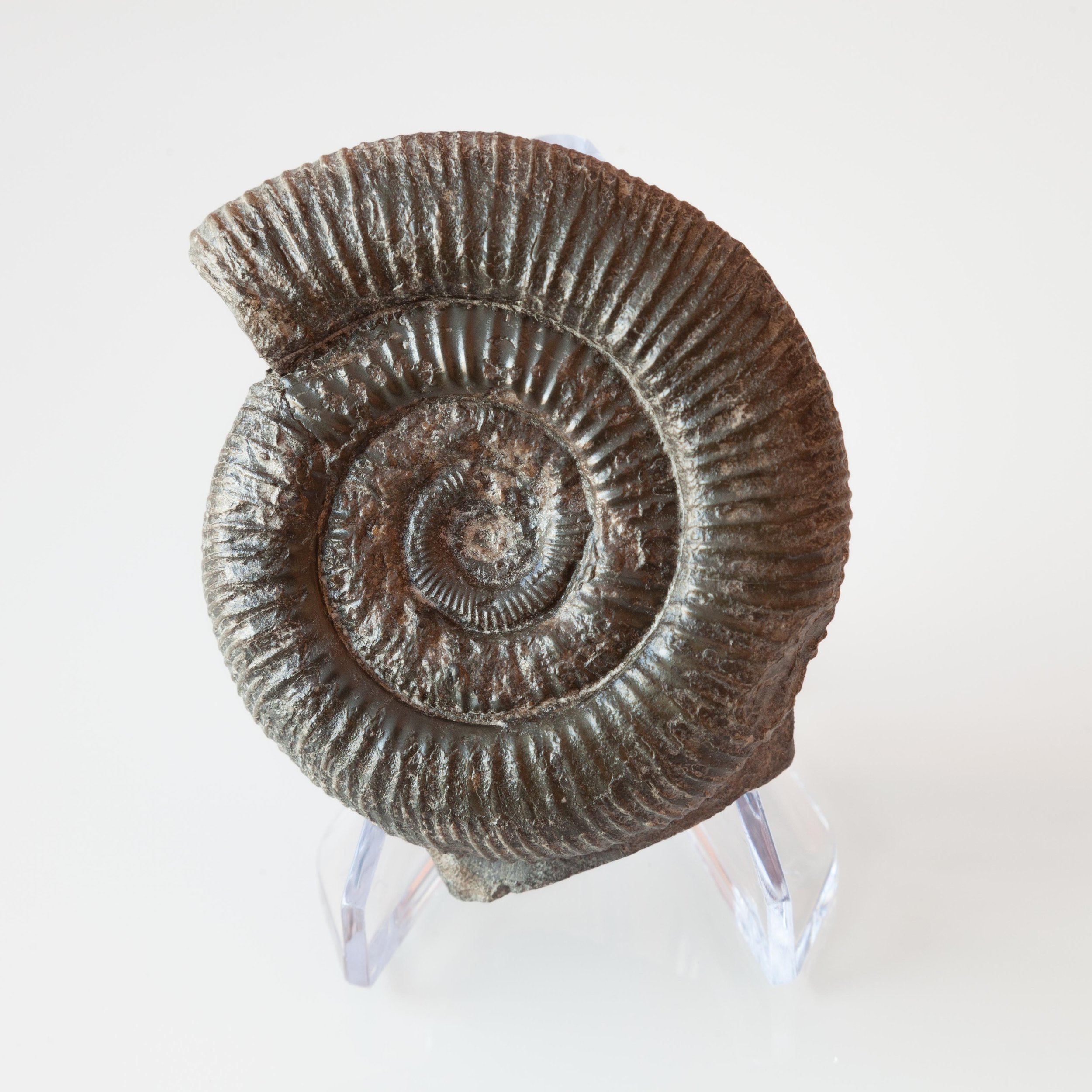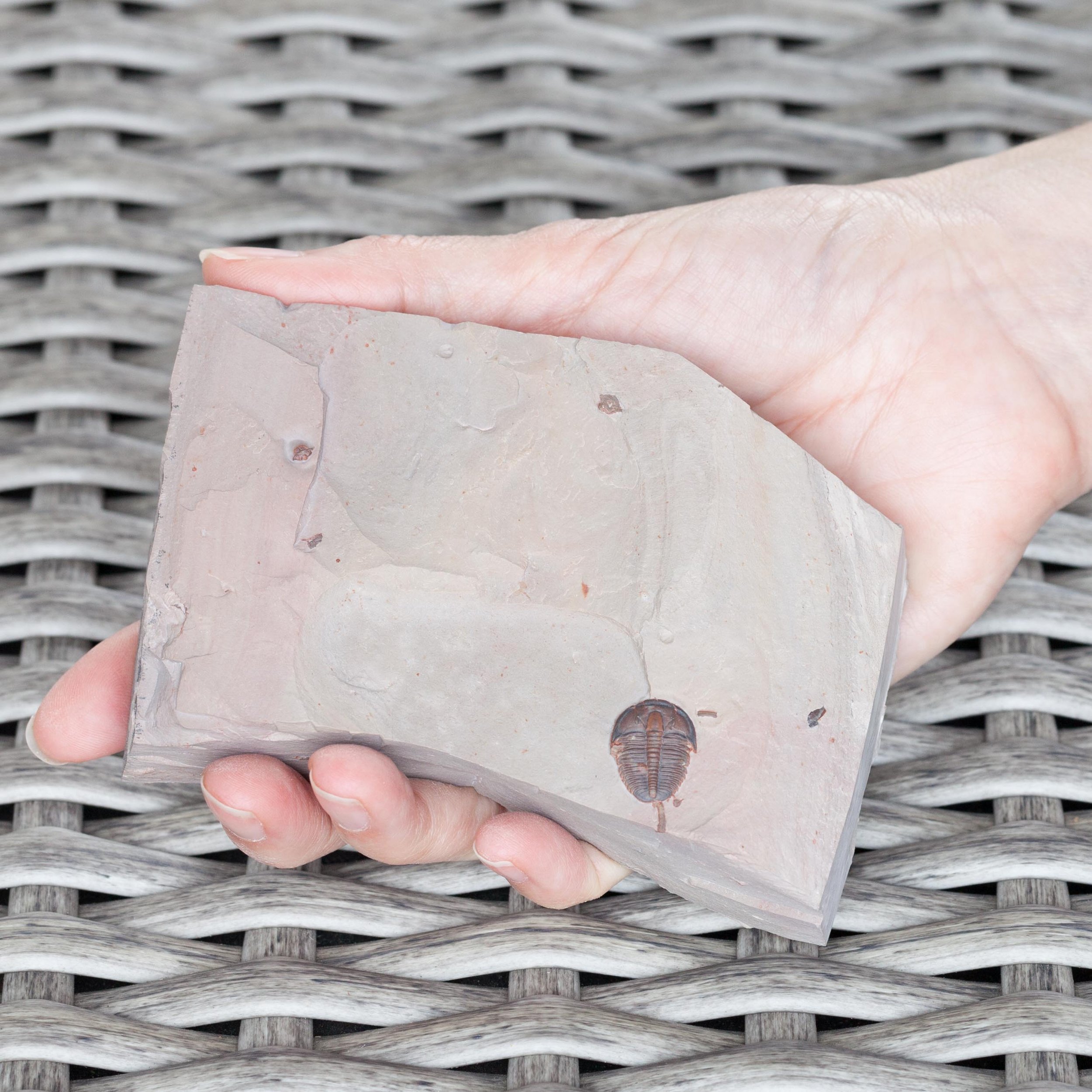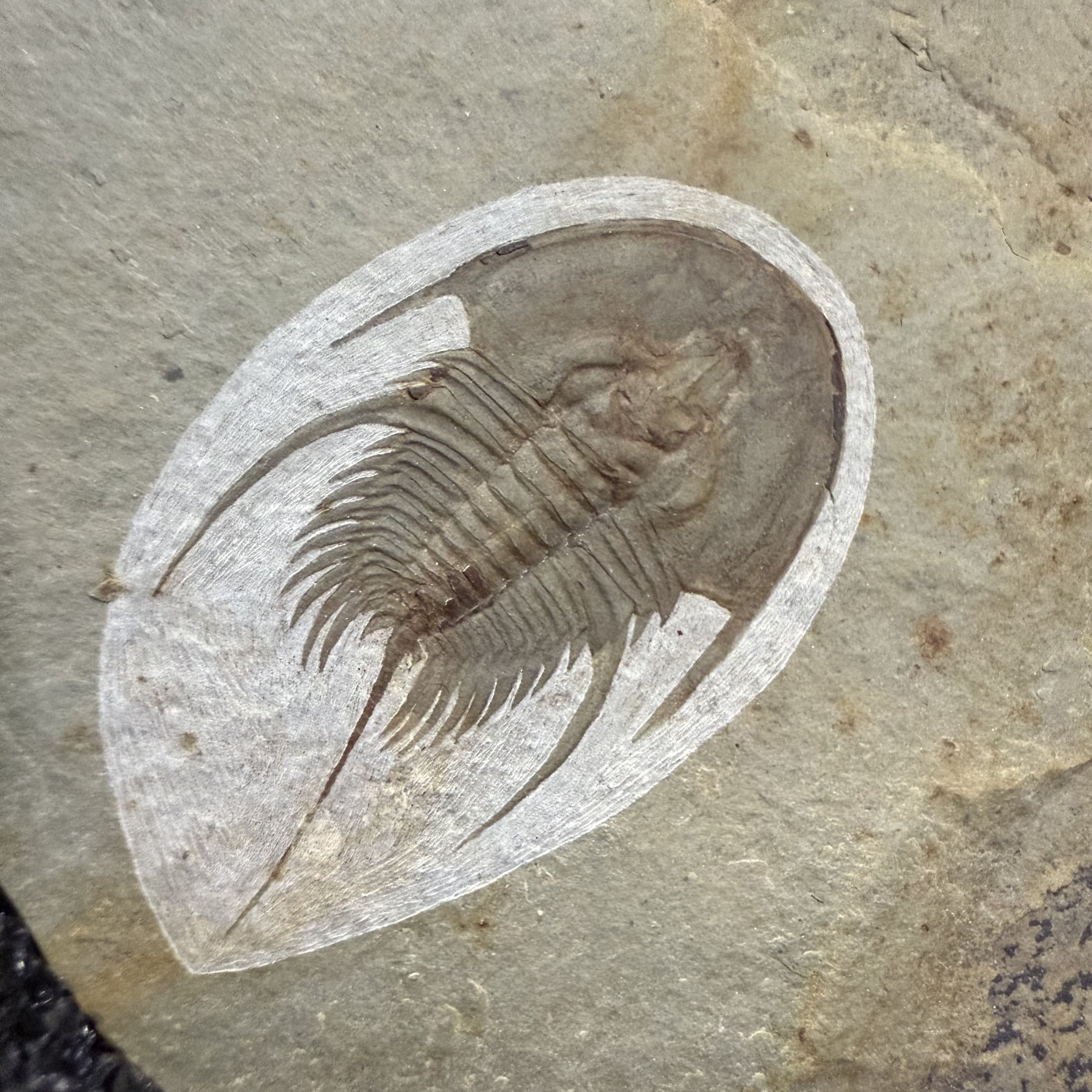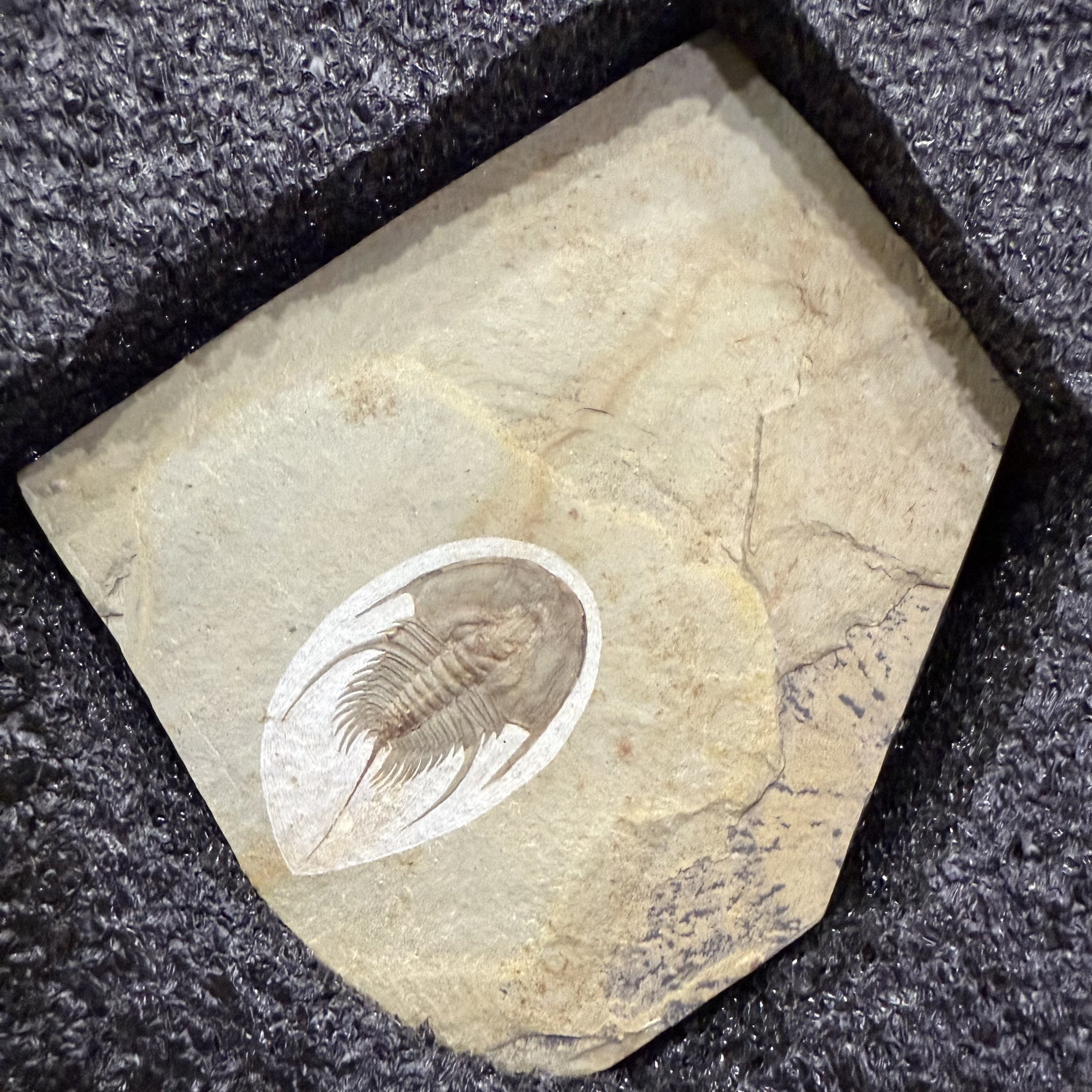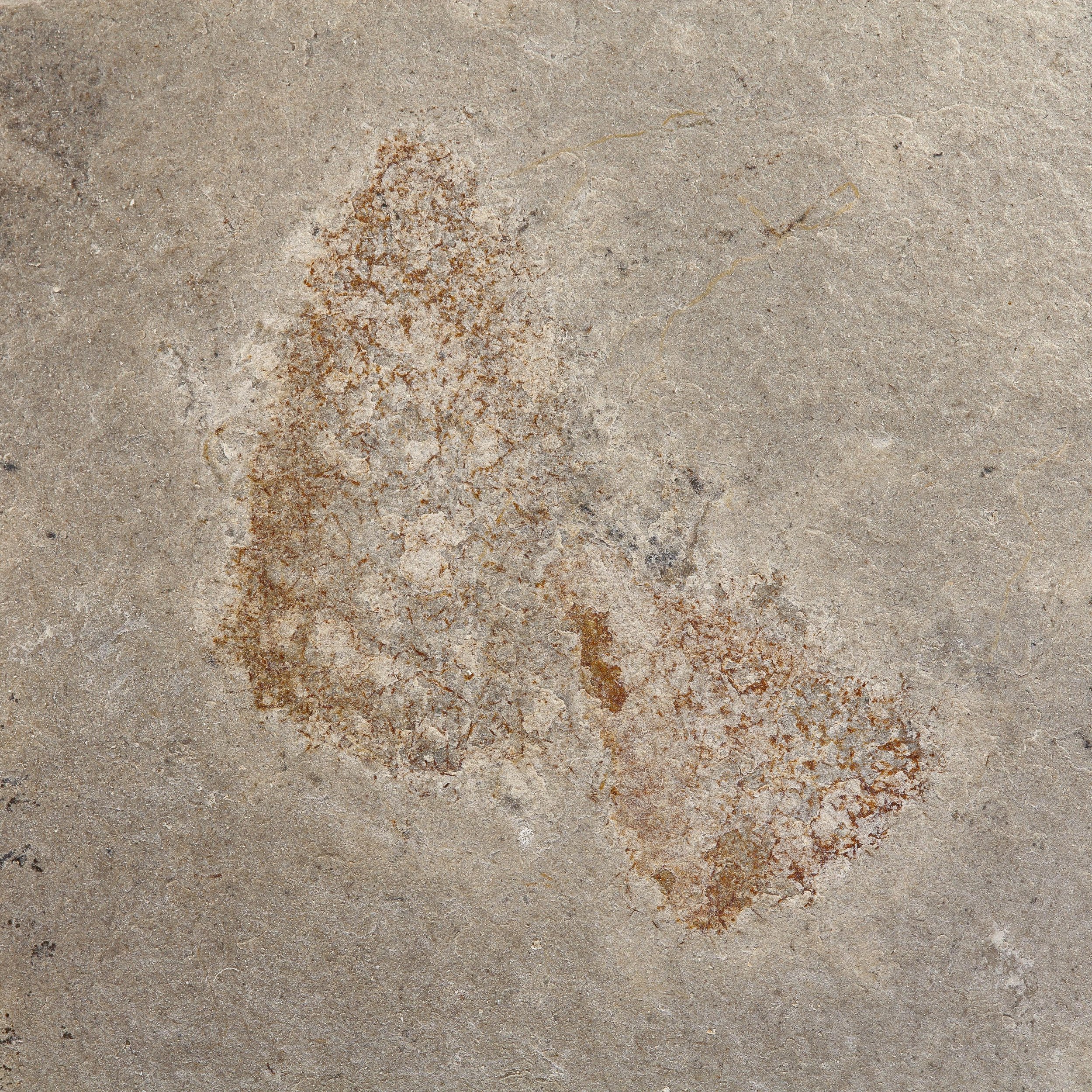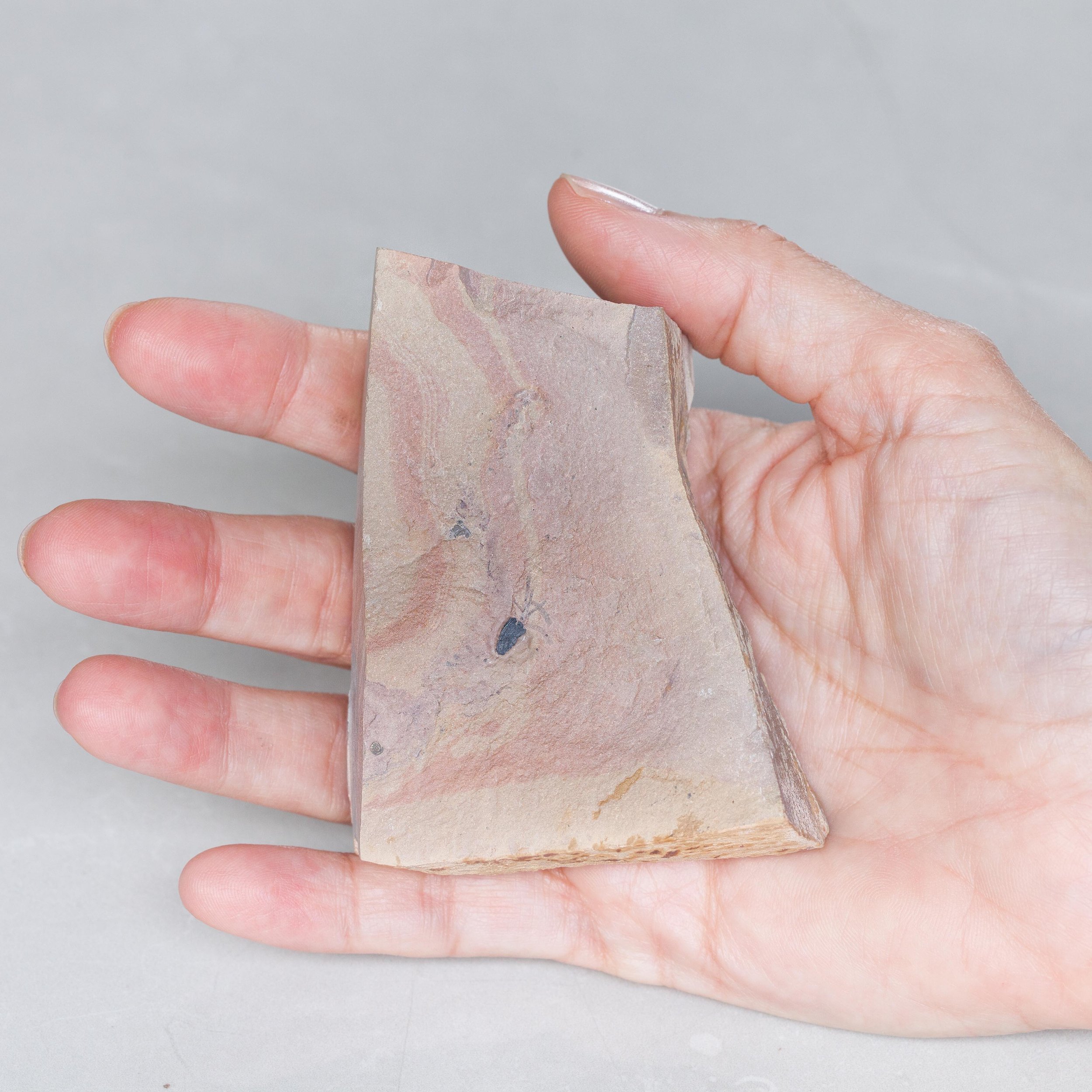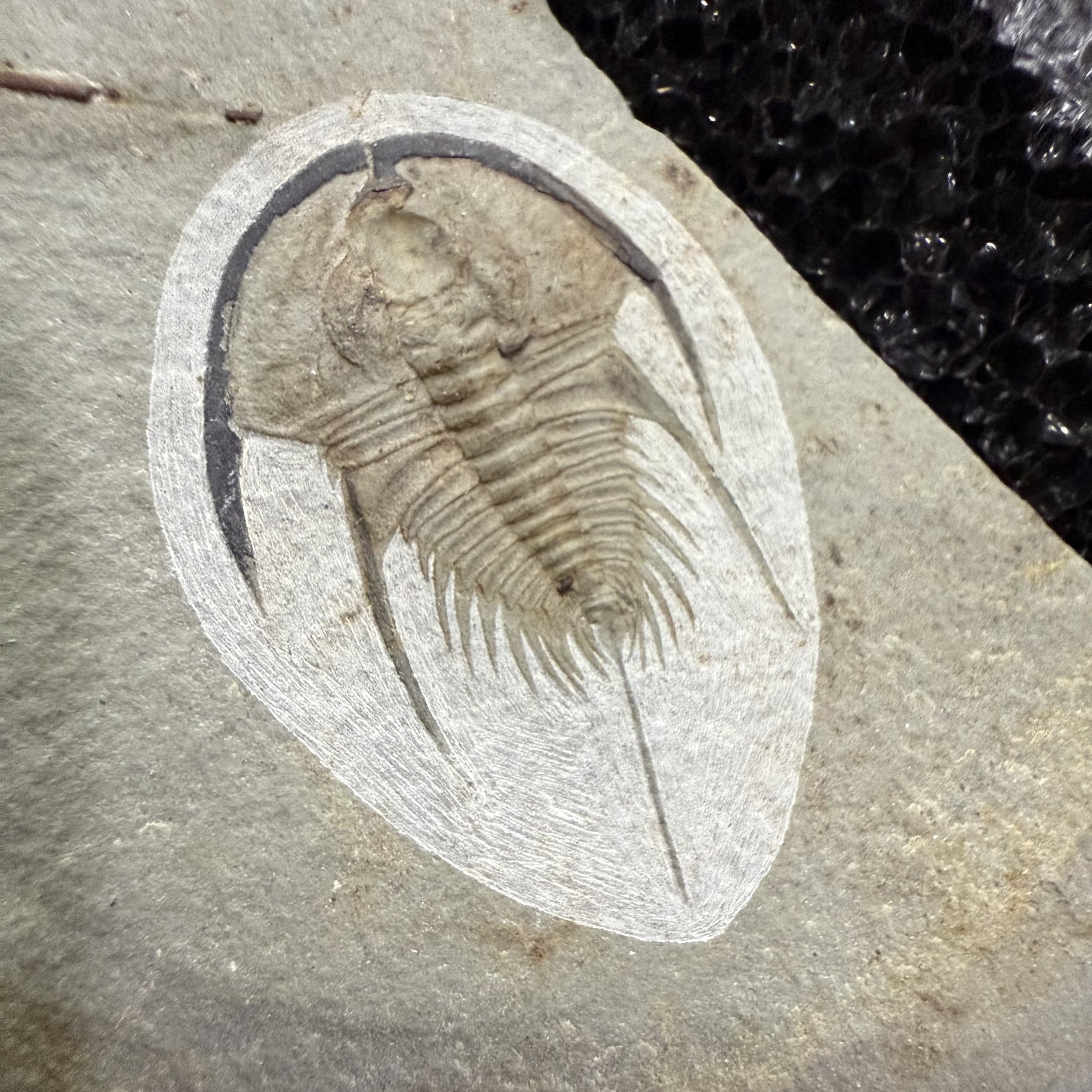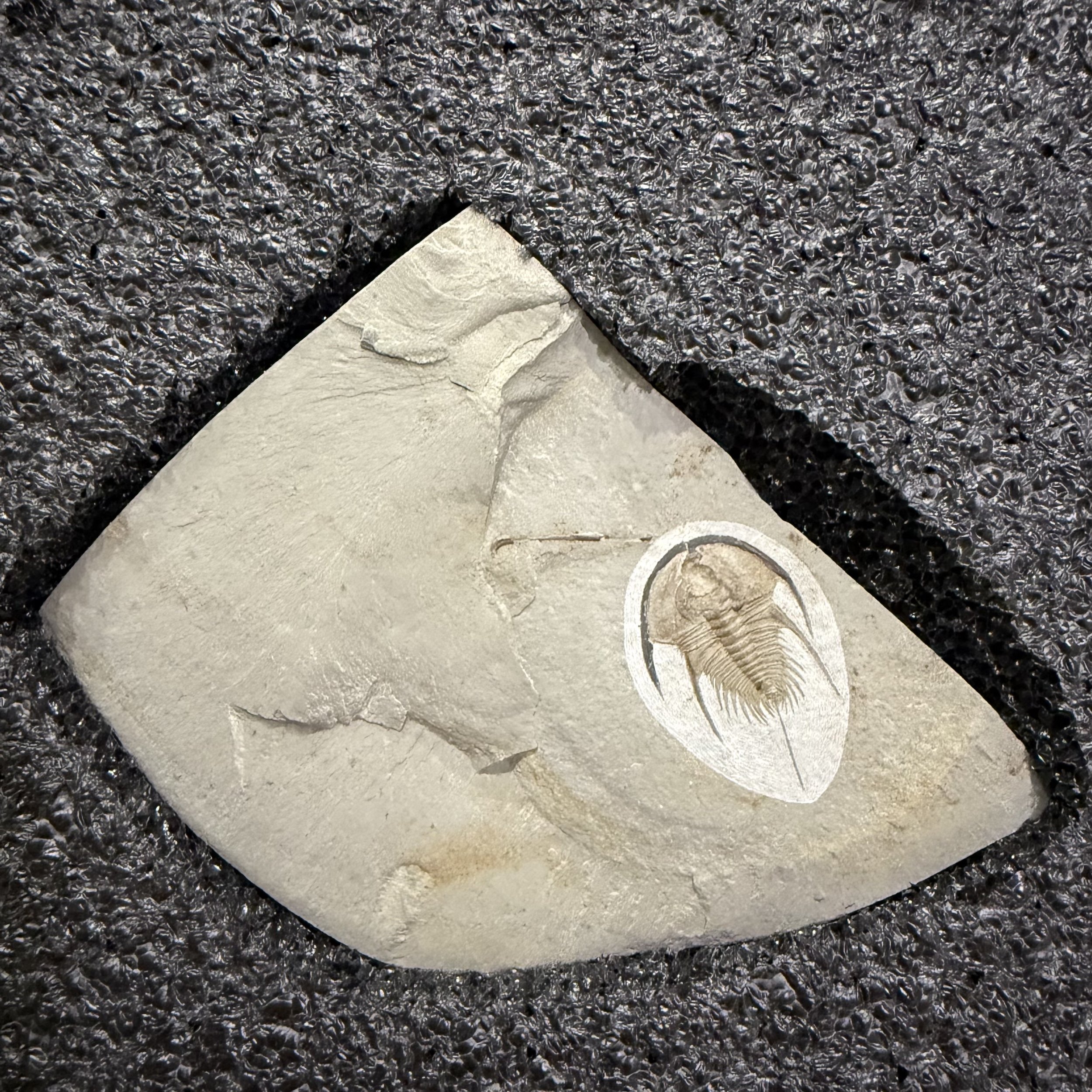 Image 1 of 3
Image 1 of 3

 Image 2 of 3
Image 2 of 3

 Image 3 of 3
Image 3 of 3




Dactylioceras commune
Vendor: Fossil Soup
SKU Number: SQ3322075
A nicely preserved example of the ammonite species Dactylioceras commune from the famous Whitby locality in North Yorkshire, England. These ammonites are found as concretions in sedimentary rocks on the foreshore at low tide. The outer whorl of the ammonite is usually visible on the edge of the concretion, which has to be broken open to reveal the rest of the fossil inside.
This 180 million year old early Jurassic (Toarcian) age ammonite is slightly pyritized and fully 3 dimensional with well defined rib ornamentation. It comes with a brush for buffing the pyrite to a high sheen if desired. An acrylic stand is included.
Full dimensions are listed below.
Vendor: Fossil Soup
SKU Number: SQ3322075
A nicely preserved example of the ammonite species Dactylioceras commune from the famous Whitby locality in North Yorkshire, England. These ammonites are found as concretions in sedimentary rocks on the foreshore at low tide. The outer whorl of the ammonite is usually visible on the edge of the concretion, which has to be broken open to reveal the rest of the fossil inside.
This 180 million year old early Jurassic (Toarcian) age ammonite is slightly pyritized and fully 3 dimensional with well defined rib ornamentation. It comes with a brush for buffing the pyrite to a high sheen if desired. An acrylic stand is included.
Full dimensions are listed below.
Vendor: Fossil Soup
SKU Number: SQ3322075
A nicely preserved example of the ammonite species Dactylioceras commune from the famous Whitby locality in North Yorkshire, England. These ammonites are found as concretions in sedimentary rocks on the foreshore at low tide. The outer whorl of the ammonite is usually visible on the edge of the concretion, which has to be broken open to reveal the rest of the fossil inside.
This 180 million year old early Jurassic (Toarcian) age ammonite is slightly pyritized and fully 3 dimensional with well defined rib ornamentation. It comes with a brush for buffing the pyrite to a high sheen if desired. An acrylic stand is included.
Full dimensions are listed below.
Additional Information
Ammonites are a group of extinct marine mollusks that occupy the same class that includes octopuses, squids, and nautiluses.
The group Cephalopoda is divided into three subgroups: coleoids (including squids, octopuses and cuttlefishes), nautiloids (the nautiluses) and ammonites.
During their long history, ammonites survived three mass extinctions—most notably the Permian extinction, a global warming that was brought on by volcanic activity about 252 million years ago, and that killed 96 percent of the planet’s marine species. While many species of ammonites died out in that extinction event, scientists believe the survivors diversified explosively in the million years that followed. Ammonites hunted the planet’s seas until they were entirely wiped out by the same cataclysm that claimed the non-avian dinosaurs about 66 million years ago.
References:
Dactylioceras
Order Ammonoidea
National Geographic Ammonte Facts
